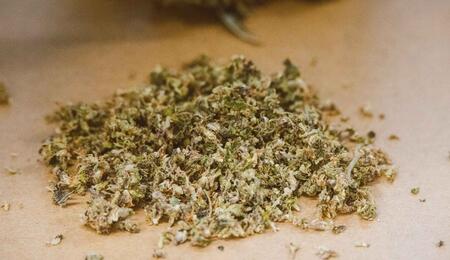Flower Continues to Dominate U.S. Market

There has been an unprecedented rise in the variety of cannabis products available to customers in recent years. You can now access all sorts of edibles, extracts, gummies, oils, etc. However, Flower continues to be the number one product that flies off the shelves, latest insights into the U.S. market reveal.
Flower sales grew from $4.92 billion in 2020 to $5.49 billion in 2021, retail sales data from six states reveals. Seattle-based Headset tracked the data across six recreational cannabis markets in California, Colorado, Michigan, Nevada, Oregon, and Washington state.
The insight also uncovers that popular Flower-buying habits are shifting as consumers become increasingly sophisticated in more established state markets. Consumers are less concerned about potency and show greater interest in other plant characteristics such as terpenes and minor cannabinoids.
At the same time, the prices of Flower are dropping. Flower's overall market share is set for a decline, with Headset analysts having noted last year's 11.5% increase in flower sales was smaller than the 18% increase in overall cannabis sales.
In the six states tracked, pre-roll sales grew by 38.9%, from $1.02 billion in 2020 to $1.42 billion in 2021. Edibles sales went up from $1.14 billion to $1.37 billion, an increase of 20.4% during the same period. Topicals were up 2.5%, while tinctures and sublingual appear to go downtrend, sinking 7.5%. With a more diversified offer on the market, prices for Flower continued to drop. In the six adult-use markets that the Seattle firm tracks, the average price for Flower per gram dropped from $6.78 in January to $5.82 in December of 2021.
Cannabis retailers claim that consumer purchases of Flower vary from market to market. Sales differ on the East Coast, where flower consumers in newer markets continue to shop based on the potency of THC. Flowers testing at 25% or higher are among the most sought-after options in these markets. Consumers are likely to stop obsessing with potency as these newer markets mature and other factors begin to play a more significant role in buying decisions, which is precisely what's happening on the West Coast.
Flower shoppers in mature markets like California and Colorado have become more sophisticated and are more appreciative of craft products. They shop for more than THC content and are increasingly willing to pay a premium for terpene and cannabinoid content. Which would suit smaller enterprises, who, in volatile markets such as California, are gobbled up by stringent regulation and competition from both big agriculture and illicit street dealers.
Retail of Flower is well-performing in Canada, too, where consumers do prioritize quality, freshness, terpenes, cannabinoid content, however, potency is also favored with products labeled up 25% THC outcompeting softer strains. Product prices in Canada have slid in all categories. Flower has seen a drop from CA$2 per gram in 2021 to around CA$1 a gram this year.
Overall, Flower keeps a steady place on the top of the retail chain, which undoubtedly stems from its unmatched qualities. At its essence, Flower delivers a social experience that other products just won't. All new products that enter the market are trying to replicate what Flower offers. Which is good, because a new wave of cannabis cultivators is coming. Brands that put more emphasis on how a Flower is grown, farmers who cultivate with luv, and who are able to pour in much more special care and tending to their crops than big agro.
_11zon.jpg)


